14
How many Africans were fighting as Soldiers of the British in the War of 1812?The total number will never be known. But we do know that 19 Blacks sent a petition to Governor Simcoe asking for land. Their request, to have land segregated from the other citizens, received no reply from Governor Simcoe. The fact Pierpoint was assigned a piece of land in Grantham Township, the centre of present day St Catharines, suggests local authorities recognised his experience as a member of Butlers Rangers. In later years, Pierpoint was called Captain Dick because of his extensive service with Butlers Rangers and, later, during the War of 1812. The creek south of the Ojibwa trail that became St Paul Street in St Catharines was named in honour of Richard Pierpoint - hence, Dick Creek.
15
Dick Creek flows into Twelve Mile Creek in St Catharines, from the left20 July 2009
St Catharines, Ontario, Canada
 Credits:
Credits:James Black
16
Trail Marker - no reference to Richard Pierpoint on the trail over Dick Creek22 July 2009
St Catharines, Ontario, Canada
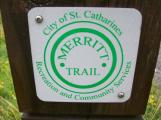 Credits:
Credits:Jim Black
17
Refugee Freedom Seeker history site, virtually ignored in the middle of a golf course20 July 2009
Niagara-on-the-Lake, Ontario, Canada
 Credits:
Credits:James Black
18
Trees covering Dick Creek in St Catharines, Ontario22 July 2009
St Catharines, Ontario, Canada
 Credits:
Credits:Jim Black
19
406 Highway covers Dick Creek, named after Richard Pierpoint20 July 2009
St Catharines, Ontario, Canada
 Credits:
Credits:James Black
20
Loyal British Subjects receive 100 Acres of Land after the War of IndependenceThe government of the day provided a unique way of calculating land for Black Refugees. Meyler, in writing "A Stolen Life," uncovered some rather interesting interpretations of the allotment of land. Sir John Johnson, in charge of the land grants, argued that each slave should receive 50 acres of land. Had Johnson had his way, those land grants would then have been turned over to the slave's owner. Under this method of allotment, Johnson himself would have received an additional 50 acres for each of his 11 enlisted slaves. In the end, freedom seeking slaves like Pierpoint received land only at the discretion of local authorities.
Meyler's "A Stolen Life" highlights a number of Loyalists who brought in slaves from the United States:
- Major Peter van Alstine near Kingston (10 slaves)
- Peter Russell (possibly 99 slaves)
- William Jarvis
- Robert Isaac Dey Gary
- Peter Robinson
It also notes that during a raid to the American side, Sir John Johnson brought back 30 slaves, some of whom belonged to him when he lived in the US. One slave owner, a Captain Matthew Elliott living near Amherstburg, had 60 slaves to tend 3,000 acres of land. The total number of such refugees is difficult to assess, but the British Government paid £50,000 to the State of Virginia as compensation for the African slaves who escaped to the British side. Considering the value of each slave at a possible £10, it would mean that 5,000 people escaped to the British jurisdiction from Virginia alone.
21
Typical Poster Advertising for Slaves18th Century
No location applicable
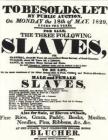 Credits:
Credits:Norval Johnson Heritage Centre
22
War of 1812: Formation of Niagara's Coloured CorpsPierpoint, now well into his 60s, joined other Africans to do battle against slave owning Americans. The Coloured Corps was established with the controversial white Captain Robert Runchey in command. Traditionally, the British required potential officers to buy their rank, which may explain in part why no black officers were appointed. Other blacks did earn the rank of non-commissioned officers who were responsible for the operations of the Corps. Unlike many of the militia's of the day, the Coloured Corps were actually incorporated which meant they had an entitlement to six months pay at the end of their service.
23
There is good indication that the men of the Coloured Corps were used as skirmishers who took hills and/or forested ground. Individual soldiers fired while another row behind were reloading and preparing to fire again. Rows exchanged roles, moving forward as rounds were continuously fired at the enemy. The weapon being fired was the single shot Brown Bess but may have been substituted with other smooth bore hunting rifles. Both rifles required a great skill to have any useful results in battle. Meyler's book suggests that in 1813 the Coloured Corps were assigned Artificers which could have meant military construction crews.24
One of the few Coloured Corps plaques in the area20 July 2009
Niagara-on-the-Lake, Ontario, Canada
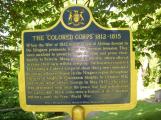 Credits:
Credits:James Black
25
Only star-shaped earthenworks in North America, Fort Mississauga, Niagara-on-the-Lake20 July 2009
Niagara-on-the-Lake, Ontario, Canada
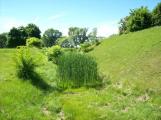 Credits:
Credits:James Black
26
Earthen Works around Fort Mississauga, built by the Coloured Corps20 July 2009
Niagara-on-the-Lake, Ontario, Canada
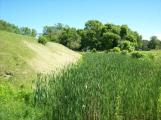 Credits:
Credits:James Black